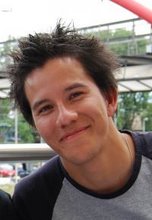We are back in Tana, just one day before Christmas after beating almost 2300km of Malagasy road in less than 5 days.
Where have we been?
It is the 19th of December, a Wednesday morning, 5 a.m. We hop into the rented jeep including driver to head southwards with the goal to reach a little town at the South-East coast of Madagascar. About 900 km of road are lying before us and it is a long ride. Nevertheless I enjoy it the most to travel by car, which gives me the best chance to get more impressions of this fascinating country. The scenery changes in an almost staged rhythm of 2 hours which makes me feel like travelling through many different countries instead of just one.

After 15 hours on the road we finally reach our destination, where our Eleonore and David from our partner NGO booked a hotel room for us. Before falling onto our beds we have a brief meeting discussing our agenda for tomorrow.
The next day…6 a.m. We leave Farafangana in two jeeps towards Tangainony where the first of two tuberculosis centre is located.
Even though the centre is merely 60km away, it takes us over 4 hours to get there which is mainly due to the river which we had to cross. The car ferry at the river is capable of transporting 2 cars and some more passengers at on time. When the ferry arrives at the other side it waits until is has enough customers…which can take quit some time.
But we used the time explore the little village near-by where the Vazahs (white foreigners) are still a guarantee for an attraction.


Later on we arrive in the village where we are warmly welcomed by the Sisters, who to our astonishment were not aware our visit. As it turned out they just did not receive the message because there is hardly any mobile network.
This fact makes it even more impressive when we start our monitoring and evaluation work, because the centre has done a formidable job. The Sisters are fairly new to the cooperation with the World Food Programme, but nonetheless there is hardly anything to complain about the new partnership.

The centre treats mainly tuberculosis patients which additionally to their free medicine receive food aid. The food aid works an incentive for the patients to adhere their treatment and in general improves their health status.

During our conversation with the Sister in charge, she reveals a shocking fact: the existence of leprosy in this district!
Leprosy…that is something I just know from history books and politically incorrect jokes when I was little…but here it becomes suddenly very real.
Even though the illness is nowadays easy to cure many infected are just too afraid to seek for help, they become socially isolated and cannot work. So it is even more important that those suffering from the possible deadly illness get treated in the centre as well.
Our check-up on the distributed rations, the condition of the warehouse and handling of the food rations, etc. everything is by the book and I am amazed by the work the Sisters have done here in such a remote area with an infrastructure leaving you almost cut off from the outside world.
After lunch with the Sister we return to Farafangana where we spent the second night.
The next day we check on the next centre in Vangaindrano. The centre is also run by Sisters and they have also done a good job, but it was hard to be more impressed after having seen the centre the day before. We do not stay there as long as in Tangainony as we have to make some kilometres on the road to reach Manakara before nightfall.
Here in Manakara we meet Victor who is working as a food aid monitor for WFP. The following Saturday we visit “Food for Work” activities with him and the NGO “Semi-Mad”.
It is the fist time that I see those kinds of projects personally, after having read and written so much about it. Now I am standing one foot deep in the mud of a newly created drainage channel which ensures that the local farmers can use new land and have sufficient resources to cultivate it. The beneficiaries have done an impressive job and the responsible agricultural technician – a woman – shows us proudly how they improved the land and introduced new seeds, diversifying the harvest.



We head on to the food distribution site where we interview beneficiaries and we listen to their stories, hopes, wishes, concerns and questions.
Asking for their biggest problem, they tell me that not everybody receives the same amount of food, which is a clear violation of WFP rules. But solving this problem seems easier than it is, because some beneficiaries get socially pressured and bullied to “voluntarily” to give a certain food share to people positioned higher in the local village hierarchy.

Changing forms, templates and techniques is one thing but changing human behaviour is and remains a long term challenge.
We leave Manakara and are on the way back to Tana. We cannot make in one day so we have to stay overnight in Ranomafana, which means hot water in Malagasy. In this little town we can take a bath in the natural hot springs and make a quick visit to the national park before we continue our return towards the capital.
We are back in Tana, just one day before Christmas after beating almost 2300km of Malagasy road in less than 5 days and I have made further unique experiences, learning more about tuberculosis, leprosy, food for work and the worries of beneficiaries.
MGG Fabi











